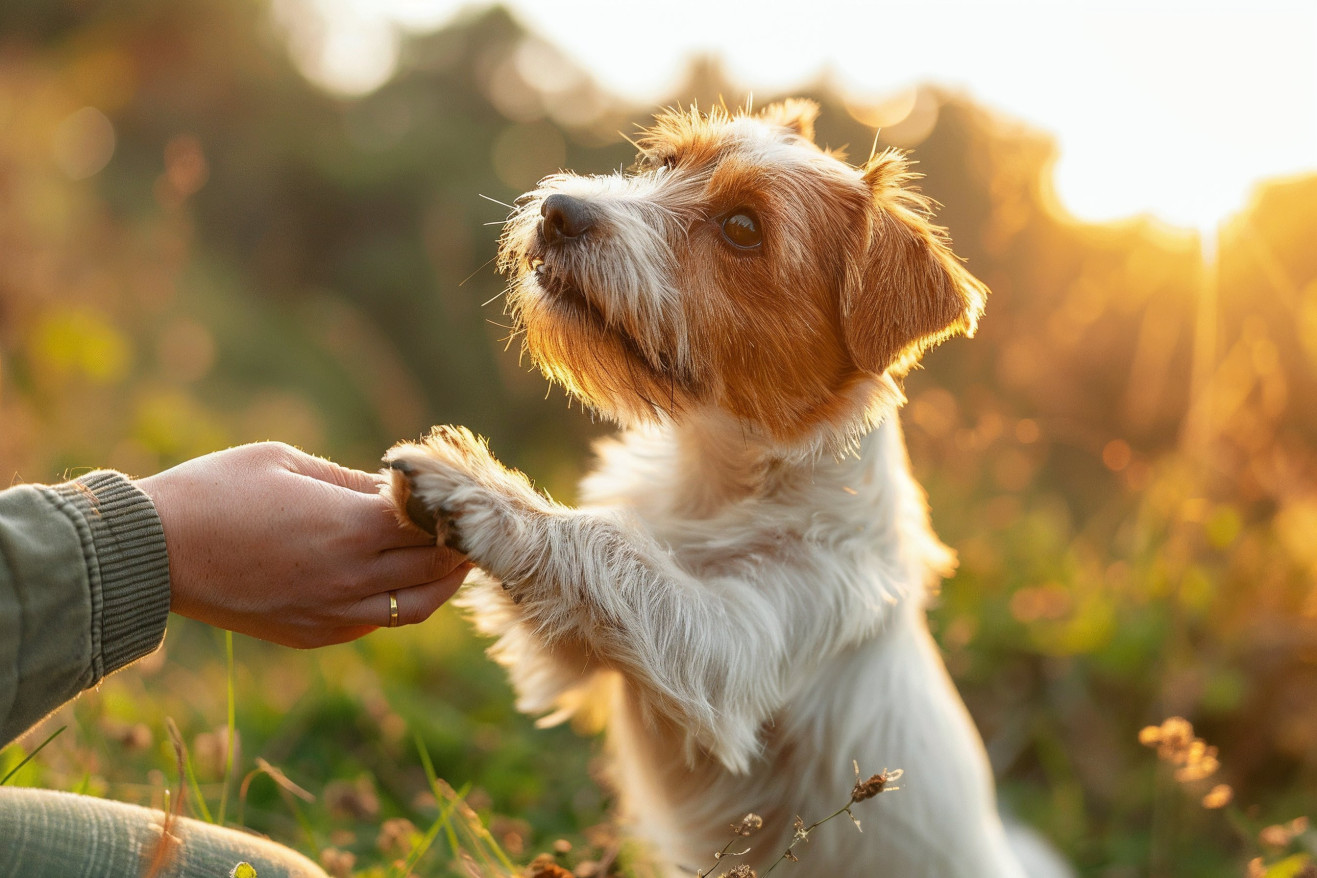Why Does My Dog Stand on Me? Exploring the Reasons Behind This Behavior
5 April 2024 • Updated 5 April 2024

Dogs stand on their owners for a variety of reasons, including attention-seeking behavior, anxiety, dominance habits, and even just affection – but knowing the reasons behind this behavior can help you better deal with this sometimes annoying habit. Some dogs stand on their owners in an attempt to get attention or affection through physical contact and eye contact. Others may be anxious and seeking comfort when they're alone, on furniture, or in your lap. In other cases, it may be a sign of dominance that needs to be addressed through training.
In this article, we'll take a look at the studies of animal behaviorists and trainers to gain a better understanding of the many reasons why dogs stand on their owners. This investigation will take a deep dive into the psychology of dogs, looking at both innate and learned behaviors and the role of the human-dog relationship. By learning more about the "why" behind your dog's behavior, you can adapt your training methods, make sure your dog's needs are being met, and strengthen your bond with your pet.
Why does my dog stand on me?
Seeking Attention and Affection Are Common Reasons for Standing on Owners
One of the most common reasons for dogs to stand on their owners is to seek attention, affection, and emotional support, according to research cited by GrowlSnarlSnap. This behavior often indicates emotional bonding and can be a form of non-verbal communication from the dog, expressing how they feel about their owner. Dogs might be conveying fondness through this peculiar habit, as they are creatures brimming with affection.
Other dogs may stand on their owners to stake a claim or to see the world from a different perspective. As BusinessInsider reports, a dog may show they are devoted to you by guarding you while you eat, marking you as theirs by rubbing their face on you, or bringing you their favorite toy to share. Certain breeds, such as herding dogs, may be more prone to this behavior due to their instinctual need for physical closeness and instinct to control the movements of their "pack".
Recognizing the positive reasons for this behavior, such as seeking attention, comfort, and bonding, can help improve the relationship between a dog and their human companion. As TryFi explains, determining whether this behavior is driven by a need for attention, protection, anxiety, or is simply a learned behavior can help you understand and address this strange habit. Once you understand what's motivating your dog, you can adapt your behavior and offer them healthy ways to meet their needs.
Anxiety and Insecurity: Dogs' Need for Reassurance
Dogs that stand on their owners may be looking for reassurance and comfort when they are feeling anxious or insecure, according to research by CozzyTogether. This behavior can be triggered by separation anxiety, noise phobias, or new environments, as the dog looks for the comfort and security of their owner. The dog's past experiences, including abandonment or trauma, may also play a role in their need for physical closeness, according to TryFi.
This behavior can be reduced by ensuring the dog has appropriate ways to deal with their anxiety, including exercise, mental stimulation, and positive reinforcement training. As the Animal Behavior College points out, working to address the underlying causes of anxiety through behavior modification can help the dog feel more secure and less likely to stand on their owner for reassurance.
Recognizing the role of anxiety and insecurity in this behavior can help owners work to create a more supportive environment for their dogs, which can strengthen the bond between pets and their people.
Dominance and Resource Guarding: Dealing With Assertive Behaviors
In some cases, dogs may stand on their owners as a way to assert dominance or guard valuable resources, such as their owner, according to research cited by CozzyTogether. If not properly managed, resource guarding can lead to aggression. Some breeds, like terriers or guarding breeds, may be more likely to exhibit resource guarding behavior because of their genetic predispositions, according to the Animal Behavior College.
While positive reinforcement training and setting boundaries can help discourage dominance-related behaviors, according to the Humane Society of the United States, it is important to work with a professional dog trainer to address resource guarding, as the research in ScienceDirect suggests that it can be difficult to address resource guarding without professional help.
Knowing the signs of dominance and resource guarding can help dog owners be proactive in creating a healthy living situation and deepening their relationship with their dogs.
Positive Reinforcement Training: How to Stop Your Dog From Jumping Up
Positive reinforcement training is a proven and ethical way to stop behaviors like jumping up on people, according to the Humane Society of the United States. The idea is to redirect the dog's behavior and reward the opposite action, such as sitting or standing on all four legs. Zoom Room Dog Training says it's important to teach a "mutually exclusive behavior" like sitting to stop a dog from jumping up.
Consistency and patience are important because it can take time for the dog to learn the new behavior, as Dog Gone Problems points out. Getting everyone in the household involved in the training can help ensure the dog learns to exhibit the desired behavior in different scenarios. A professional dog trainer can help you learn and implement positive reinforcement training methods and will be able to offer support and advice, which is why the Humane Society recommends it for stopping unwanted behaviors.
By using positive reinforcement to train a dog out of jumping up, pet parents can build a deeper, more positive relationship with their furry friends.
Environmental Management: Creating a Supportive Environment
Environmental management is the practice of changing the dog's environment to make it less likely that the dog will exhibit the behavior, in this case, jumping on people, as Tails of Connection notes. This can mean giving the dog other ways to expend energy, like interactive toys or puzzle feeders. Your Dog's Friend also notes that setting limits and controlling the dog's access to different areas can help.
It's important to note that management should be used in conjunction with positive reinforcement training to be most effective, as Smart Dog University points out. It's also important to be consistent and patient when using management techniques, as the dog may need time to adjust to the changes and learn new behaviors.
By changing the dog's environment and giving them other options, dog owners can support their positive reinforcement training and work to address the underlying causes of the behavior. This, in turn, can help improve the bond between the dog and their owner.
Conclusion: Building a Better Relationship With Your Dog
In most cases, jumping up is a cry for attention, says The Spruce Pets. This means that you can train your dog to stop jumping on people and instead greet them in a more polite manner.
The Humane Society of the United States suggests that a combination of management and training is the best way to deal with jumping. Management involves setting up the situation so that your dog can't jump up, while training involves making sure that your dog learns that they won't get attention if they jump.
It's important to make sure that everyone in the household is on the same page and that everyone is following the training plan all of the time. As Best Friends Animal Society points out, it's also important to avoid physical punishment and instead use positive reinforcement to change behaviors.
Professional help from a certified dog trainer can be a valuable resource and provide additional insights. By addressing the root causes of jumping, dog owners can build a stronger, more positive relationship with their animal companions.


